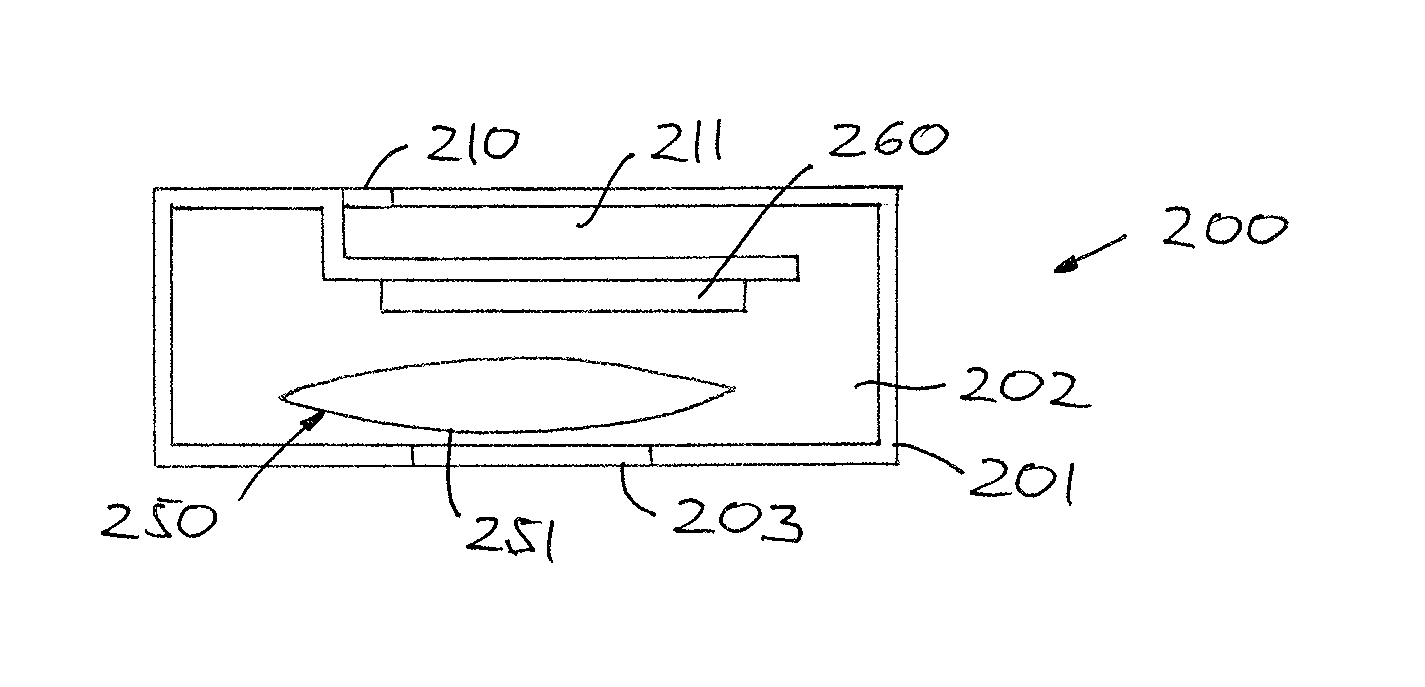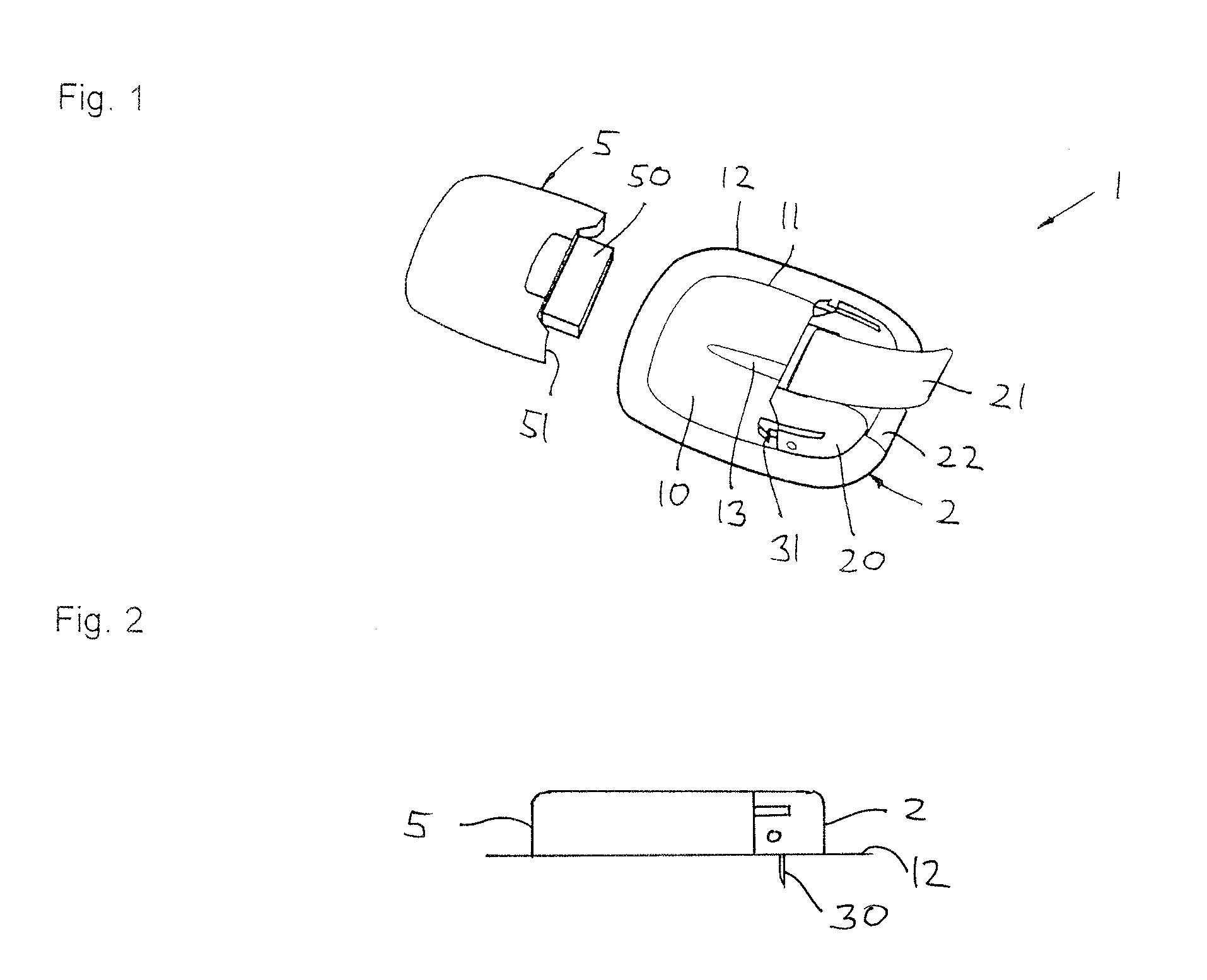Vented drug reservoir unit
a technology of vented drugs and reservoir units, which is applied in the direction of water supply installation, mechanical equipment, transportation and packaging, etc., can solve the problems of changing the time-profile of insulin, and achieve the effects of preventing aqueous vapour from entering, preventing water condensation, and preventing water condensation visible
- Summary
- Abstract
- Description
- Claims
- Application Information
AI Technical Summary
Benefits of technology
Problems solved by technology
Method used
Image
Examples
example 1
Scope of the test: Condensation effects on the inspection window.
Test object: 15 reservoir units of the same general design as in FIGS. 6 and 7, i.e. comprising a reservoir and an inspection window, the remaining components being replaced with dummy components having representative properties for heat storage. All units were mounted with 2K Gore membranes having allowing a flow of 1.2 l / h at a pressure differential of 500 mBar between the interior of the housing and ambient air.
Test object is to be moved from hot and humid place (T=+40° C., RH=98%) into a cold and semi humid place (T=+5° C., RH=75%) for nine cycles lapsing over three days. Two climate champers are used: Cl_hot; T=+40° C., RH=98%, and Cl_cold; T=+5° C., RH=75% Test cycle: (1) Start of cycle, (2) specimens are placed in Cl_cold for 60 min., (3) specimens are placed in Cl_hot for 60 min., (4) condensation effects on the inside of the inspection window are observed, and (5) end of cycle, go to step 2—if three cycles has...
example 2
Scope of the test: To clarify if condensation effects appear on the inside of the inspection window in a regular insulin pump.
Test object: One MiniMed Paradigm® pump with catheter applied has been tested. The pump comprises an inspection window through which a cartridge can be inspected. The pump is mounted with a membrane having allowing a flow of 15.2 l / h at a pressure differential of 500 mBar between the interior of the pump housing and ambient air.
The test procedure: Test object is to be moved from hot and humid (T=+40° C., RH=98%) into a cold and semi humid place (T=+5° C., RH=75%) for a total of nine cycles lapsing over three days. Between each move the pump is inspected for a few minutes at 20° C. and 75% RH.
Procedure for each cycle: (1) Start of cycle, (2) the specimen is placed in cold environment for approximately 60 min, (3) specimen is observed for ½-3 minutes; photos are taken if dough is experienced, (4) specimen is placed in hot environment for approximately 60 min, (...
PUM
 Login to View More
Login to View More Abstract
Description
Claims
Application Information
 Login to View More
Login to View More - R&D
- Intellectual Property
- Life Sciences
- Materials
- Tech Scout
- Unparalleled Data Quality
- Higher Quality Content
- 60% Fewer Hallucinations
Browse by: Latest US Patents, China's latest patents, Technical Efficacy Thesaurus, Application Domain, Technology Topic, Popular Technical Reports.
© 2025 PatSnap. All rights reserved.Legal|Privacy policy|Modern Slavery Act Transparency Statement|Sitemap|About US| Contact US: help@patsnap.com



